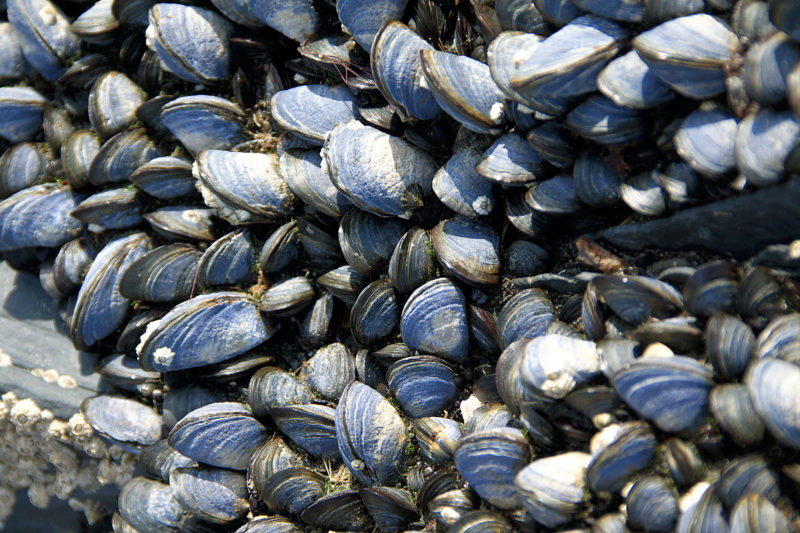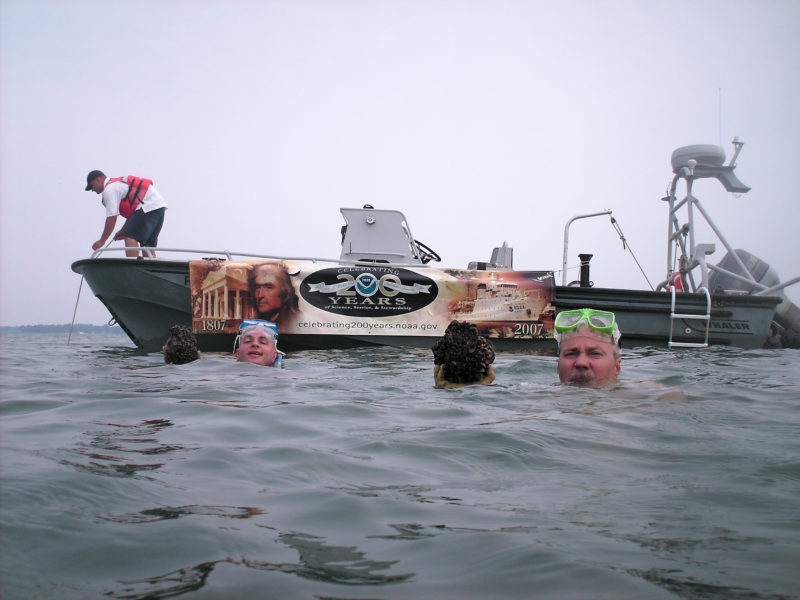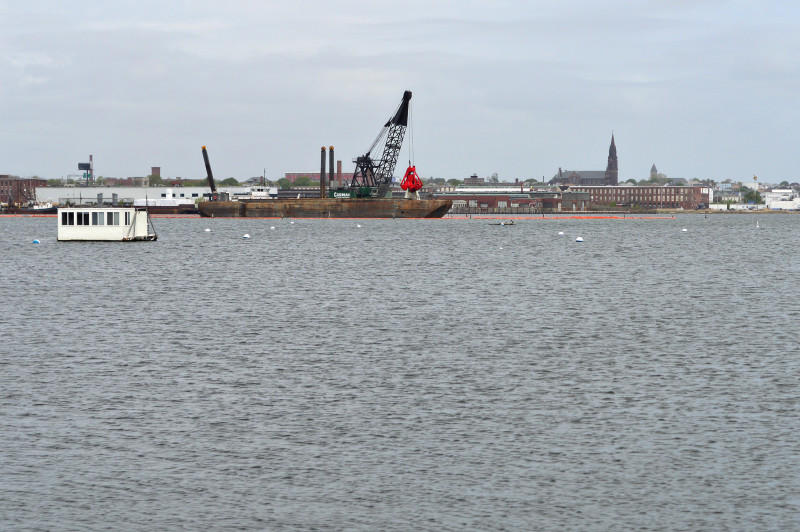How tiny mussels tell the story of toxic pollution in Buzzards Bay
Thanks to stricter laws and better enforcement, toxic pollution in Buzzards Bay has decreased dramatically over the past several decades. Unfortunately, it’s still a problem for the Bay’s health. In the Coalition’s latest State of Buzzards Bay report, released last summer, the Bay received a toxic pollution score of just 52 out of 100.
You’ve probably never heard of a program called “Mussel Watch,” a 30-year effort led by NOAA’s National Centers for Coastal Ocean Science that provides the Coalition with data to track toxic pollution. As you’ll read below, federal programs like Mussel Watch play a vital role in the Coalition’s work to fight pollution – but threats to the future of federal science, research, and funding could rob us of the tools we need to save Buzzards Bay.
Why do scientists use mussels to measure toxic pollution?

Mussels are an excellent indicator of contamination because they absorb and accumulate toxins in their bodies, and they don’t move for most of their lives. (Image: Phil Shirley/Flickr)
Mussels are a “canary in a coal mine” for toxic pollution in waterways like Buzzards Bay. As they feed, mussels absorb toxins that are in the water and sediments around them. Over time, these contaminants accumulate in their bodies. And because mussels don’t move like fish do, they’re an excellent indicator of pollution levels in a particular place.
The Coalition tracks the status of toxic pollution in the Bay and publishes it every four years in our State of Buzzards Bay report. To do this, we rely on science from a federal program called “Mussel Watch.”
How does the Coalition use federal science to track toxic pollution in Buzzards Bay?
Mussel Watch is the longest-running and most extensive contaminant monitoring program in the United States. It’s part of NOAA’s National Status and Trends, which was created in response to public concern over the health of the nation’s coasts.
Since 1986, the Mussel Watch program has monitored more than 150 different contaminants at over 300 locations on the coasts of the Atlantic, Pacific, Gulf of Mexico, and Great Lakes. Scientists and trained volunteers take samples of mussels (or oysters, depending on which species is more common), as well as sediments at the bottom of waterways.

Scientists and trained volunteers collect data on contamination in mussels, oysters, and sediment as part of a 30-year federal program called Mussel Watch. (Image: NOAA Photo Library/Flickr)
In Buzzards Bay, the Coalition uses Mussel Watch data from sampling stations located at Gooseberry Neck in Westport, the Cape Cod Canal, and West Falmouth. These three stations have the longest record of Mussel Watch data, stretching back for more than 20 years. The majority of the Bay’s toxic pollution score in the State of Buzzards Bay (80%) is composed of Mussel Watch data from these three locations.
For the remaining 20% of the toxic pollution score, we use data from the U.S. Environmental Protection Agency’s New Bedford Harbor cleanup effort – which also tests mussels to track levels of harmful PCBs in the harbor. Together, these two federal science programs allow us to keep an eye on trends in toxic pollution across the Bay.
What do mussels show about toxic pollution in Buzzards Bay?
Among all of the pollution threats to Buzzards Bay, toxic contamination has seen the greatest reductions in the past several decades. But data from Mussel Watch and the EPA show that there’s still a long way to go until toxic pollution is a relic of the Bay’s past.
In 2015 State of Buzzards Bay report, the Bay received a toxic pollution score of 52 out of 100. The portion of the score (20%) that uses data from mussels in New Bedford Harbor has increased in recent years as the EPA has accelerated its PCB cleanup efforts. But the portion of the score (80%) that uses Mussel Watch data has declined slightly over the last 13 years since our first State of Buzzards Bay report was released.
Using Mussel Watch data, the Coalition tracks 36 different chemical compounds in three classes: pesticides, heavy metals, and polyaromatic hydrocarbons (PAHs). These contaminants are on the EPA’s Priority Pollutant List: a set of chemical pollutants that the EPA regulates under the Clean Water Act.

The EPA is accelerating its work to dredge contaminated sediments from the bottom of New Bedford Harbor. Levels of toxic PCBs are improving, but there’s still a long way to go.
What can I do to reduce toxic pollution and protect federal science for Buzzards Bay?
Every day, each one of us contributes contaminants to our land, air, and water. One large source of toxic pollution is household hazardous wastes: common household products like paint, cleaners, polishes, batteries, and used motor oil. Pesticides from our yards, as well as from farms and golf courses, are another toxin that can make its way into the Bay.
Fortunately, we can all make a difference to reduce these contaminants around our homes. Make sure to properly dispose of all household chemicals at your local municipal recycling facility or during a designated drop-off day. Always follow directions for applying pesticides – or better yet, just skip them completely.
But there’s one more thing that’s just as important as these everyday actions: your voice. We need you to stand up for the federal science and funding that helps save Buzzards Bay, from Mussel Watch to grants that fund innovative pollution reduction projects to the cleanup of toxic pollution from New Bedford Harbor. Without these important programs, it would become even more challenging to protect clean water for future generations.